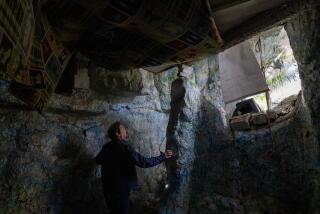Column: The promise of a balanced future for the Santa Monica Mountains
The coastal range of the Santa Monica Mountains is a vast regional treasure. Malibu Canyon cuts through the hills, its sides rising more than 2,000 feet above the Pacific Ocean. Groves of oaks and sycamores dot rolling waves of chaparral. Hundreds of species of plants and animals inhabit the 52,000 acres that stretch from the Pacific Palisades in Los Angeles to the Ventura County line. It abuts Los Angeles and yet feels a world away, serene and quiet.
Half of those 52,000 acres are in public hands, much of it thanks to the farsighted work of then-Congressman Anthony Beilenson and others in the 1970s. But the other half is divided among about 8,000 parcels, some owned by vintners and homeowners, many with horses on their land. For the last 30 years they have lived with uncertainty about the future of this region, and they have tussled with environmentalists about how best to protect its history and beauty.
Now, Los Angeles County Supervisor Zev Yaroslavsky is poised to secure a compromise that may preserve the land and a balance of public and private for centuries.
“It’s been a long slog,” Yaroslavsky acknowledged last week. “But we’re now on the verge of protecting it for all time.”
If that happens, it will be because the California Coastal Commission and the Los Angeles County Board of Supervisors give final approval to what’s known as the Santa Monica Mountains Local Coastal Program, an exhaustively detailed land-use plan to guide future development of the coastal zone.
Until now, the Coastal Commission has overseen the area, and it has frustrated residents, who find the commission slow and arbitrary, as well as environmentalists, who say the commission’s approach does not distinguish between land that needs strict protection and property that could support construction.
If the program is approved, permitting authority would move to the county, which would administer it under the rules laid out in the voluminous document.
The plan’s most important accomplishments reflect its attempt to balance the diverse interests in these mountains: Environmentally sensitive areas, including creeks and wetlands, are protected against all development; most ridgelines are off-limits to new homes; and the size of new homes is limited. Existing vineyards are allowed to remain but no more can be planted; horse owners are also allowed to stay but some have to upgrade to new standards to prevent manure from contaminating creeks, or otherwise mitigate their environmental impact.
Not everyone likes all of those provisions. Indeed, with something as sweeping and significant as this plan, it’s safe to say that just about everyone involved is unhappy about something. But there’s also plenty to appreciate. Equestrians get to keep their horses, and vintners can keep growing grapes. Environmentalists get safeguards on water quality and hillsides. And homeowners get what they’ve never had: a stable and predictable future for their community and clear rules about what they can and cannot do.
The result is extraordinarily broad support for the plan. Paul Edelman, deputy director of natural resources and planning for the Santa Monica Mountains Conservancy, says it will guide development toward appropriate areas and away from sensitive habitats. Mark Gold, longtime head of Heal the Bay and now a professor at UCLA, says it will “protect the land, wildlife and aquatic resources of the Santa Monicas for decades to come.” And when I asked Kim Lamorie, president of the Las Virgenes Homeowners Federation, for her reaction to the impending approval, her answer was simply: “Yay!” The plan, she added, not only protects habitat and vistas but also home values, which will be enhanced by its clear rules for building and expansion.
It is often the case in the politics of this region that elected officials jump at the chance to make big headlines and then settle for small progress, part of a political culture driven by ego and encouraged by term limits, which create incentives to show short-term results and insulate officials from long-term repercussions. The success of this project is a happy example of the opposite: Yaroslavsky and his staff worked for more than a decade to get to this point, and some of the activists were involved just as long. Ten years of sometimes contentious and tedious meetings, way outside the limelight, have produced something profound.
Yaroslavsky, who will be termed out of his supervisorial seat this year, doesn’t like to talk about his legacy, but he did allow last week that he viewed this as his greatest achievement in the area of environment and land use. More important, he added, “It will be something that my grandchildren and great grandchildren will enjoy.” That’s a legacy.
More to Read
A cure for the common opinion
Get thought-provoking perspectives with our weekly newsletter.
You may occasionally receive promotional content from the Los Angeles Times.







